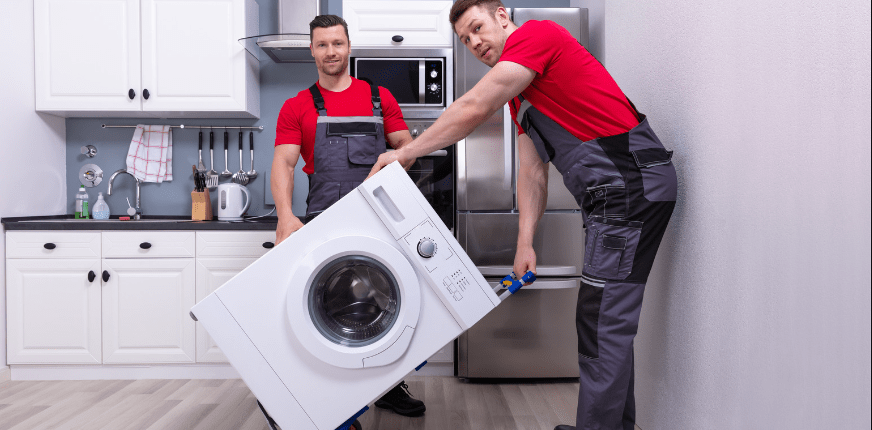How to Prepare and Move Household Appliances Like a Pro
Steven E / Thursday July 27, 2023
Introduction
Moving household appliances can be a major undertaking when relocating for personal or business reasons. Proper preparation is the most important part of ensuring a successful move. Taking precautions to prepare appliances ahead of time not only prevents potential damage but also ensures the safety of people around them. Follow these steps to prepare your appliances for relocation and facilitate a smoother and more efficient transition to your new space.
1. Prepare ahead of the moving date
Taking the time to make preparations before your move helps ensure a smooth and efficient relocation of your appliances. Check out these guidelines:
- Create an inventory list of all the appliances to be moved: Starting with this will help you stay organized and keep track of your belongings.
- Measure the dimensions of each appliance: Determine where each unit will fit best in the new location. This can also help you identify any potential obstacles or tight spaces that could damage the appliance.
- Gather necessary packing materials and tools: These include blankets, bubble wrap, packing tape, and dollies to provide proper protection and transportation of your appliances. Consider looking into model-specific shipping bolts, which can be found by entering your model number on our website.
- Check appliance manuals: These manuals contain specific instructions that may be particularly useful when moving appliances with unique requirements or precautions.
2. Disconnect the appliances
- Disconnect water lines for appliances that use water: Be sure to shut off the water supply before disconnecting the hoses. Have towels close by to absorb any residual water that may leak during the process.
- Unplug all electrical appliances: Secure all cords to prevent any damage or tangling during transport. You can use cable ties or tape to keep the cords coiled and attached to each appliance. For gas appliances like stoves and dryers, make sure the gas supply is turned off before disconnecting the appliance from the gas line.
3. Clean and defrost
- Clean the interior and exterior of each appliance: Cleaning your appliances before packing helps prevent the growth of mold and unpleasant odors. Remove any food particles, grease, or dirt that may have accumulated over time inside and outside of the appliances. Be sure to use appropriate cleaning solutions and techniques, which should be found in the appliance manuals.
- Defrost refrigerators and freezers: Unplug each one and allow enough time for the ice to melt, which may take several hours or even a full day depending on the amount of ice buildup. You can expedite the defrosting process by placing bowls of hot water inside the appliance or using a hairdryer on low heat to melt the ice. Make sure that you have towels available to absorb the melting water and prevent any leaks. After your appliances are clean and defrosted, allow them to dry completely before packing to avoid mold or mildew growth during transport.
4. Pack and secure all appliances
- Disassemble the appropriate appliances: For appliances that need disassembly, follow the instructions in the appliance manuals to take them apart. Keep all parts, hardware, and accessories organized in labeled bags or containers so you can easily reassemble the unit after the move.
- Use the correct packing materials: Start by using padding and wrapping materials like blankets, bubble wrap, and packing paper to cover and protect the surfaces of your appliances from scratches, dents, and other potential damage while in transit.
- Secure the doors of your appliances: Use moving straps or tape so they remain closed during transport. Be cautious when using tape as it can mark up some surfaces. Consider using painter’s tape as an alternative since it’s less likely to leave residue or cause damage.
- Use appliance dollies to safely transport heavy appliances: These specialized moving tools allow for easier maneuvering and reduce the risk of injury to you or damage to your belongings.
5. Load appliances onto the moving truck
Loading appliances onto a moving truck is a daunting task, so it’s extremely important to keep them stable during transport. Carefully loading your appliances onto a moving truck cuts the risk of damage during transport and contributes to a successful moving experience.
- Load the heaviest appliances first: Refrigerators, stoves, and washing machines should be loaded first and positioned toward the front of the truck near the cab. This helps distribute weight and creates a stable foundation for lighter items.
- Keep the appliances upright: Brace them against the truck’s walls or other large, heavy items to secure and stabilize them. Use moving straps or ropes to anchor each unit to prevent any shifting or movement during transit that could lead to damage.
- Leave some space for ventilation: Proper airflow around appliances helps prevent overheating and potential damage to internal components.
Conclusion
You made it! With these guidelines, you’re all set to properly and safely move appliances to your new home. Planning ahead of a move helps prevent damage and injury in the process. Remember to consult appliance manuals for specific instructions.
If you have appliance-related questions or concerns, please reach out to our team here. You can also get repair help on our forum and shop for parts on our website by having your appliance model and serial numbers on hand.
With nearly a decade of experience in providing top-notch customer service regarding appliance parts and repair, Steven enjoys sharing practical advice, troubleshooting tips, and interesting information to help readers stay informed.


